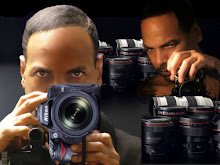

Frederick Dewayne Hubbard
April 1938 December 2008) . He was known
for playing hard bop and post bop styles from the early
60s and on. His unmistakable and influential tone contributed to new
perspectives for modern jazz and bebop.
Hubbard started playing the and trumpet in his school band, studying at the Jordan Conservatory with the principal trumpeter of the Indianapolis Symphony Orchestra. In 1958, at the age of 20, he moved to New York, and began playing with some of the best jazz players of the era. In June 1960 Hubbard made his first record as a leader, Open Sesame, with saxophonist Tina Brooks, pianist McCoy Tyner, bassist Sam Jones, and drummer Clifford Jarvis
In August 1961, Hubbard made one of his famous records, Ready for Freddie, which
was also his first collaboration with saxophonist Wayne Shorter. Hubbard would
join Shorter later in 1961 when he replaced Lee Morgan in Art Blakey's Jazz
Messengers. He played on several Blakey recordings.
It was during this time
that he began to develop his own sound, distancing himself from the early
influences of Clifford Brown and Morgan, and won the Downbeat jazz magazine "New Star" award on trumpet.Although his early 1970s jazz albums Red Clay, First
Light, Straight Life, and Sky Dive were particularly well received and
considered among his best work, the albums he recorded later in the decade were rated high and open his talents to a non-jazz listening audience.
In August 1961, Hubbard made one of his famous records, Ready for Freddie, which
was also his first collaboration with saxophonist Wayne Shorter. Hubbard would
join Shorter later in 1961 when he replaced Lee Morgan in Art Blakey's Jazz
Messengers. He played on several Blakey recordings.
It was during this time
that he began to develop his own sound, distancing himself from the early
influences of Clifford Brown and Morgan, and won the Downbeat jazz magazine "New Star" award on trumpet.Although his early 1970s jazz albums Red Clay, First
Light, Straight Life, and Sky Dive were particularly well received and
considered among his best work, the albums he recorded later in the decade were rated high and open his talents to a non-jazz listening audience.
First Light won a 1972 Grammy Award and included pianists Herbie Hancock and Richard Wyands, guitarists Eric Gale and George Benson, bassist Ron Carter, drummer Jack DeJohnette, and percussionist Airto Moreira. In 1994, Freddie, collaborating with Chicago jazz vocalist/co-writer Catherine Whitney, had lyrics set to the music of First Light.




No comments:
Post a Comment